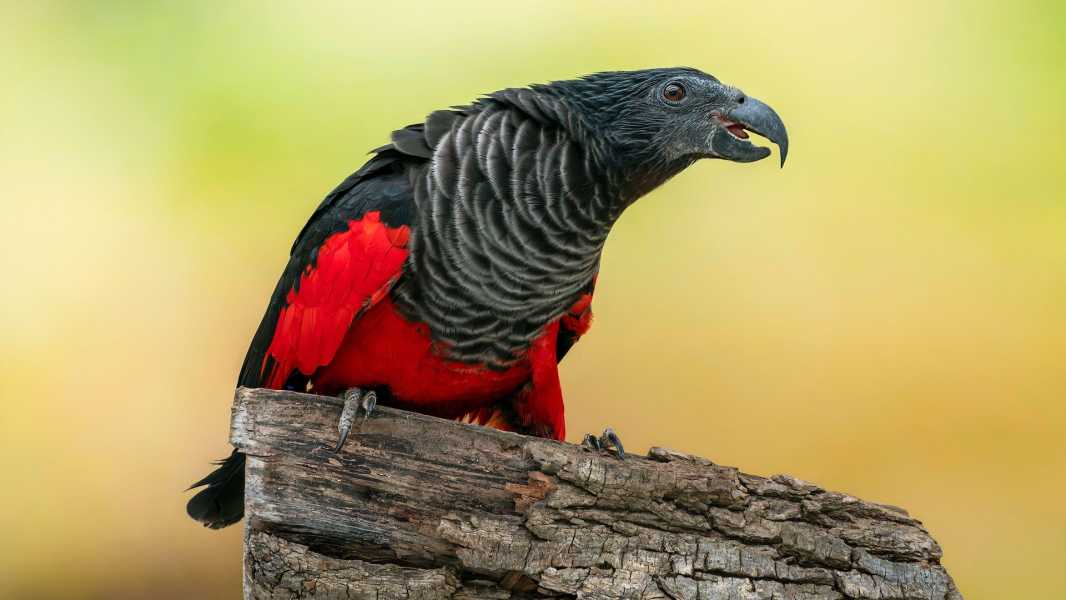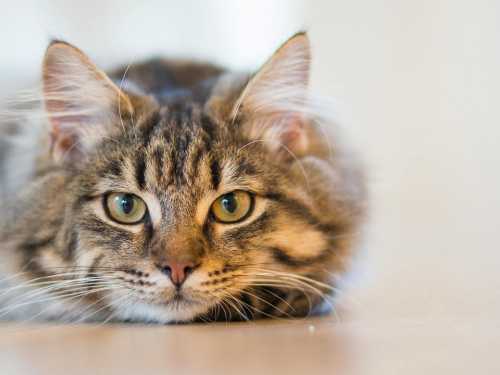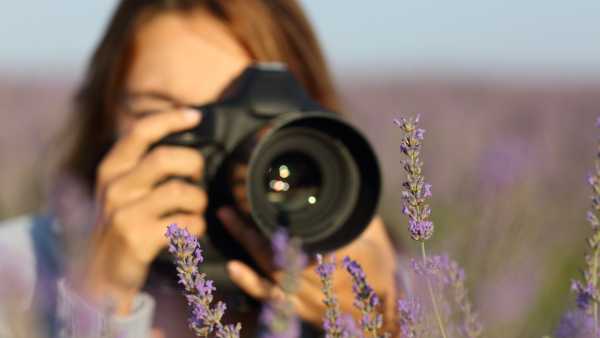
The Pesquet's parrot is often called the Dracula parrot, partly due to its brightly coloured plumage. (Photo credit: Iggino Van Bael via Alamy)
Name: Dracula's Parrot (Psittrichas fulgidus)
Habitat: New Guinea.
Diet: figs, flowers and nectar.
Why it's cool: The Pesquet's parrot is better known as the Dracula parrot — and with its combination of jet-black and blood-red feathers, it's easy to see why. Their calls are also terrifying, as their shrill calls echo throughout the rainforests of New Guinea.
Dracula parrots are about 18 inches (46 centimeters) long and weigh between 1.3 and 1.8 pounds (600 and 800 grams). They can live for about 20 to 40 years. Their plumage is mostly black and dark gray, but they have red feathers on their belly, tail, and wings. Adult males have red spots behind their eyes, which distinguishes them from females.
The guttural, hoarse calls of this species are very distinctive. Unlike the chirps or shrill cries of common parrots, the call of the Dracula parrot is a sharp screech that sounds more like the cry of a mythical predator than the sound of a fruit-eating bird. This unique sound likely evolved as a form of communication in the dense forests of New Guinea, and may serve to scare off potential threats.
Dracula parrots often make strange sounds while flying. This may help them communicate with other members of their flock, especially in dense forests where birds can easily lose sight of each other. Their calls may also serve as territorial signals or warnings, informing other animals of their presence or confirming dominance over feeding grounds.
With their long, hooked beaks and semi-bald heads, Dracula parrots resemble vultures. However, unlike meat-eating birds of prey, Dracula parrots are not as bloodthirsty as their nickname might suggest. Instead, they are avid fruit eaters, especially figs, and will occasionally eat flowers or nectar. These birds have no facial feathers, which is thought to help prevent tangling while eating dirty fruit.
Although little is known about the breeding habits of Dracula parrots, they are thought to nest in large hollow trees. They typically mate once a year and lay one or two eggs at a time.
Due to their highly prized feathers and the demand for exotic birds kept in captivity, Dracula parrots have been hunted and are now classified as “Vulnerable” on the IUCN Red List of Threatened Species.
TOPICS amazing animals

Lydia SmithSocial Link NavigationScience Writer
Lydia Smith is a health and science journalist who has worked for publications in the UK and US. She is studying for an MSc in Psychology at the University of Glasgow and has an MA in English Literature from King's College London.
You must verify your public display name before commenting.
Sourse: www.livescience.com





